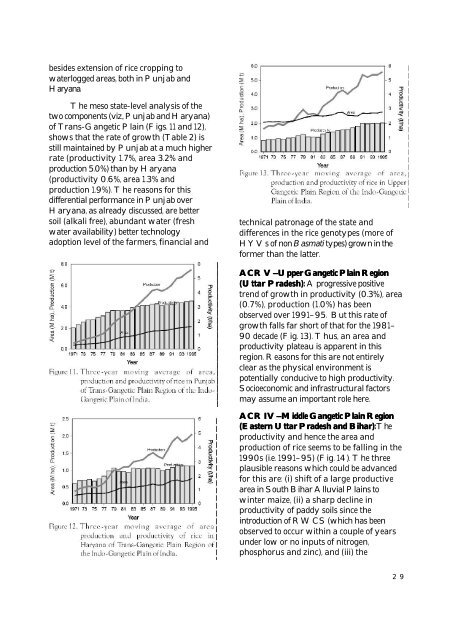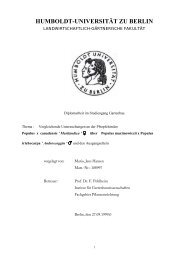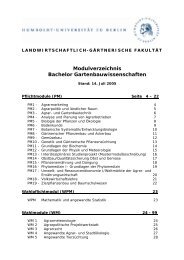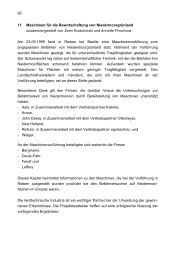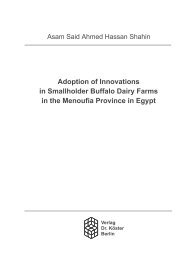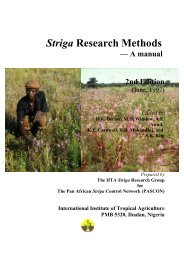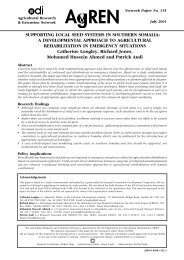Rice-Wheat Cropping Systems of the Indo-Gangetic Plain of India
Rice-Wheat Cropping Systems of the Indo-Gangetic Plain of India
Rice-Wheat Cropping Systems of the Indo-Gangetic Plain of India
Create successful ePaper yourself
Turn your PDF publications into a flip-book with our unique Google optimized e-Paper software.
esides extension <strong>of</strong> rice cropping to<br />
waterlogged areas, both in Punjab and<br />
Haryana.<br />
The meso state-level analysis <strong>of</strong> <strong>the</strong><br />
two components (viz., Punjab and Haryana)<br />
<strong>of</strong> Trans-<strong>Gangetic</strong> <strong>Plain</strong> (Figs. 11 and 12),<br />
shows that <strong>the</strong> rate <strong>of</strong> growth (Table 2) is<br />
still maintained by Punjab at a much higher<br />
rate (productivity 1.7%, area 3.2% and<br />
production 5.0%) than by Haryana<br />
(productivity 0.6%, area 1.3% and<br />
production 1.9%). The reasons for this<br />
differential performance in Punjab over<br />
Haryana, as already discussed, are better<br />
soil (alkali free), abundant water (fresh<br />
water availability) better technology<br />
adoption level <strong>of</strong> <strong>the</strong> farmers, financial and<br />
technical patronage <strong>of</strong> <strong>the</strong> state and<br />
differences in <strong>the</strong> rice genotypes (more <strong>of</strong><br />
HYVs <strong>of</strong> non Basmati types) grown in <strong>the</strong><br />
former than <strong>the</strong> latter.<br />
ACR V—Upper <strong>Gangetic</strong> <strong>Plain</strong> Region<br />
(Uttar Pradesh): A progressive positive<br />
trend <strong>of</strong> growth in productivity (0.3%), area<br />
(0.7%), production (1.0%) has been<br />
observed over 1991–95. But this rate <strong>of</strong><br />
growth falls far short <strong>of</strong> that for <strong>the</strong> 1981–<br />
90 decade (Fig. 13). Thus, an area and<br />
productivity plateau is apparent in this<br />
region. Reasons for this are not entirely<br />
clear as <strong>the</strong> physical environment is<br />
potentially conducive to high productivity.<br />
Socioeconomic and infrastructural factors<br />
may assume an important role here.<br />
ACR IV—Middle <strong>Gangetic</strong> <strong>Plain</strong> Region<br />
(Eastern Uttar Pradesh and Bihar): The<br />
productivity and hence <strong>the</strong> area and<br />
production <strong>of</strong> rice seems to be falling in <strong>the</strong><br />
1990s (i.e. 1991–95) (Fig. 14). The three<br />
plausible reasons which could be advanced<br />
for this are: (i) shift <strong>of</strong> a large productive<br />
area in South Bihar Alluvial <strong>Plain</strong>s to<br />
winter maize, (ii) a sharp decline in<br />
productivity <strong>of</strong> paddy soils since <strong>the</strong><br />
introduction <strong>of</strong> RWCS (which has been<br />
observed to occur within a couple <strong>of</strong> years<br />
under low or no inputs <strong>of</strong> nitrogen,<br />
phosphorus and zinc), and (iii) <strong>the</strong><br />
29


